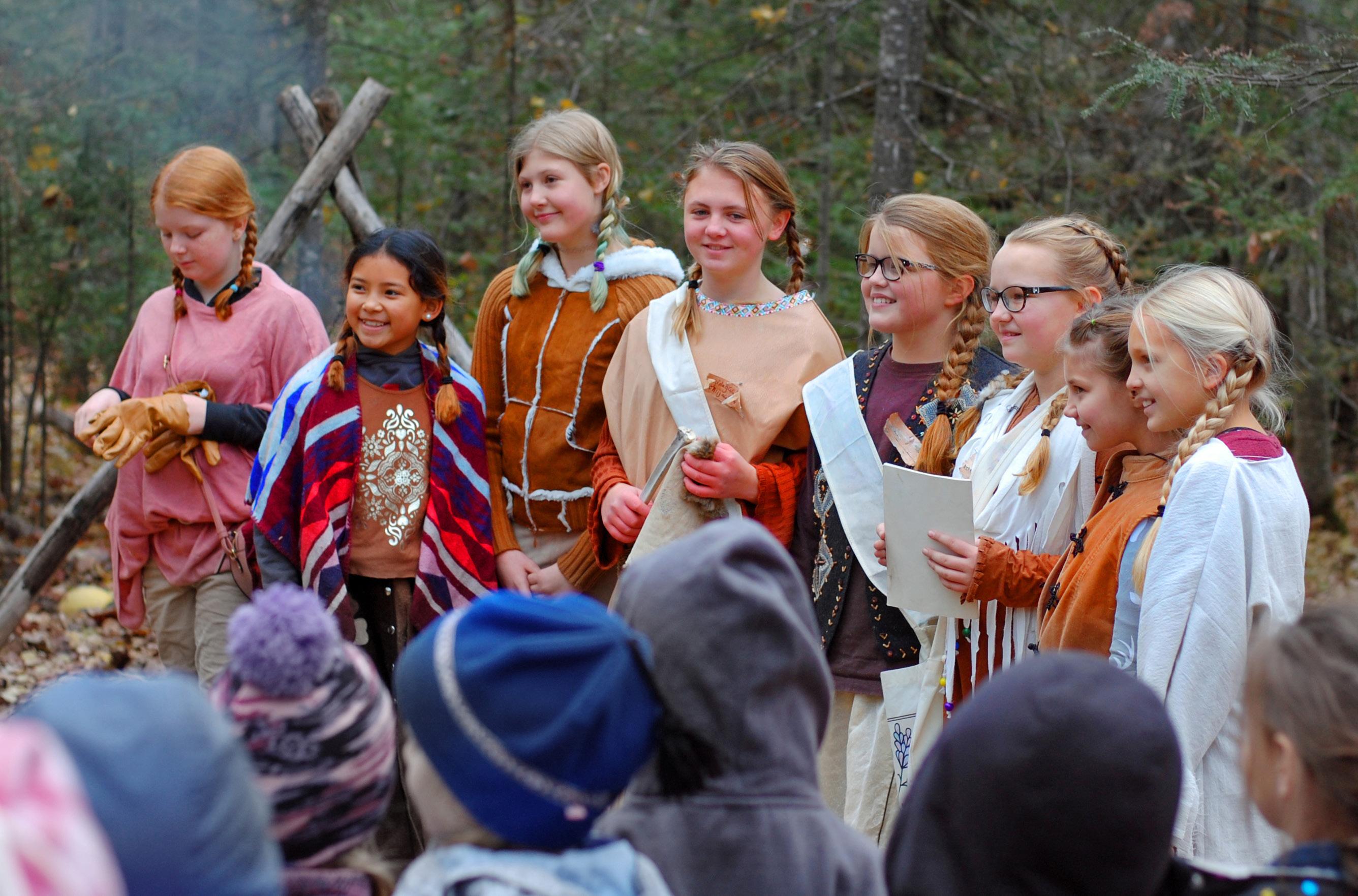
2 minute read
Living in the PAST
north Shore Community School hosts living history museum and re-enactment of early-1800s northland
History can sometimes be a hard sell to elementary students. They might question why they need to know the information, or how it pertains to their lives. Sometimes, it can be difficult for young students to put themselves into the shoes of historical figures.
A unique tradition at North Shore Community School overcomes these barriers and places students right into the thick of our region’s history. In October, the school’s fifth- and sixth-grade classes celebrated six years of hosting the Voyageur Rendezvous, a living history museum and re-enactment celebrating the lives and relationships between early-1800s voyageurs and the native Ojibwe who inhabited our region.
The North Shore Community School is a charter elementary school, set back in the woods about halfway between Duluth and Two Harbors. Their rural setting, with 40 acres of forest surrounding the school, offers a unique opportunity for their students to really understand how it felt to live in the wild Northland hundreds of years ago.
“It is important for our students to learn the history of the area where they grow up,” said Shelly Pierson, executive director for the school. “And part of our school’s mission is to foster in each student a sense of responsibility for the environment. The Rendezvous is important on both these fronts.”
Students at North Shore Community School regularly experience time outdoors, even during cold winter months. “I love the environmental mission of the school,” said Angie Nolle, a parent who has sent her children to the school. “The outdoor time is so important to my kids.”
During September and October, the students preparing for the Rendezvous have more outdoors time than most. The fifth graders — who study and play the parts of the native Ojibwe — work in teams out in the school forest to build several authentic wigwams and campsites. The sixthgraders study and play the part of the voyageurs, building trading posts from the ground up.
The sixth-grade voyageurs learn how to speak some historically important French phrases, as well as a few songs that voyageurs would have sung, such as “Viva La Compangie” and “Alouette.” They spend a day at Wolf Ridge Environmental Learning Center in Finland to learn about the natural world of the early 1800s. The students also do in-class work, reading the historical fiction book “The Broken Blade” by William Durbin, a story about a 13-year-old boy who has to quit school to support his family, and goes to work as a voyageur for the North West Company. invites you TO OUR SECOND ANNUAL COCKTAIL HOUR & SYMPOSIUM

The fifth-graders learn to speak a few key Ojibwe phrases and create their own Ojibwe language dictionaries. They also read a historical fiction book, but from the point of view of the Ojibwe: “The Birchbark House” by Louise Erdrich, the story of a 7-year-old girl learning to care for her family after smallpox has devastated her community. Also available to the students is the book “Roots,” a local history book published by community members of Duluth Township, where North Shore Community School is located.










